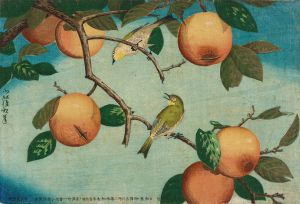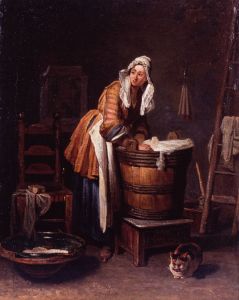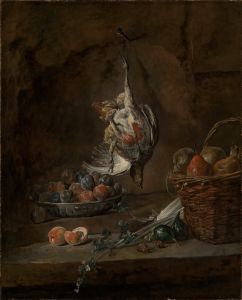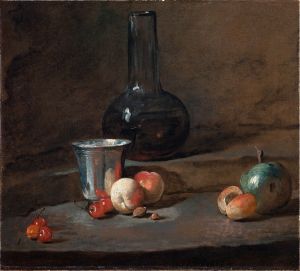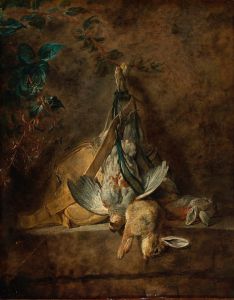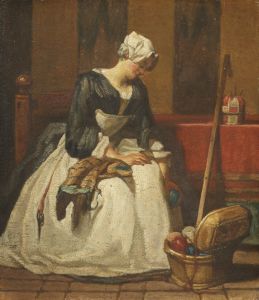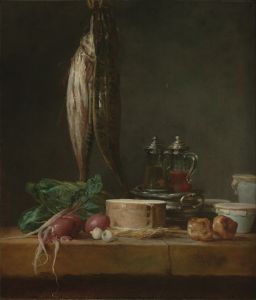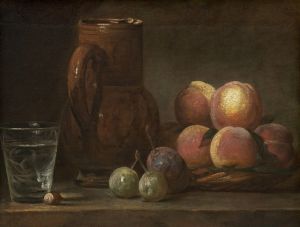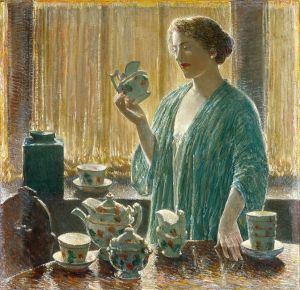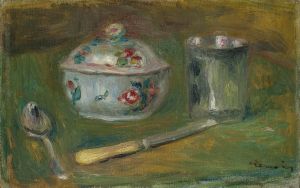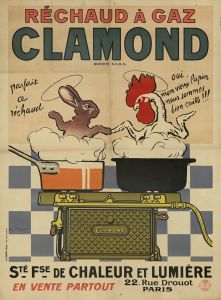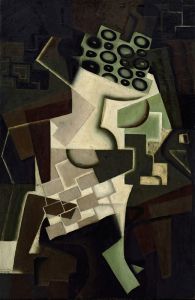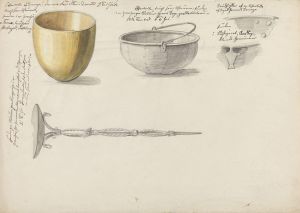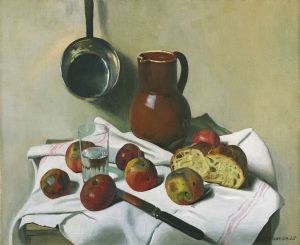
Nature morte au chaudron de cuivre
A hand-painted replica of Jean Siméon Chardin’s masterpiece Nature morte au chaudron de cuivre, meticulously crafted by professional artists to capture the true essence of the original. Each piece is created with museum-quality canvas and rare mineral pigments, carefully painted by experienced artists with delicate brushstrokes and rich, layered colors to perfectly recreate the texture of the original artwork. Unlike machine-printed reproductions, this hand-painted version brings the painting to life, infused with the artist’s emotions and skill in every stroke. Whether for personal collection or home decoration, it instantly elevates the artistic atmosphere of any space.
Jean Siméon Chardin, a prominent 18th-century French painter, is renowned for his still life paintings, which capture the simplicity and beauty of everyday objects with remarkable precision and subtlety. One of his notable works is "Nature morte au chaudron de cuivre" (Still Life with Copper Pot), which exemplifies his mastery in portraying domestic scenes and inanimate objects with a sense of tranquility and realism.
Chardin was born in Paris in 1699 and spent most of his life in the city. He was admitted to the prestigious Académie Royale de Peinture et de Sculpture in 1728, which marked the beginning of his successful career as an artist. Unlike many of his contemporaries who focused on grand historical or mythological themes, Chardin found inspiration in the ordinary, often depicting kitchen utensils, fruits, and other household items with a meticulous attention to detail.
"Nature morte au chaudron de cuivre" is a testament to Chardin's skill in composition and his ability to infuse life into seemingly mundane objects. The painting features a copper pot, which serves as the focal point, surrounded by other kitchen items. Chardin's use of light and shadow is particularly noteworthy, as it highlights the textures and surfaces of the objects, creating a sense of depth and realism. The copper pot, with its warm, reflective surface, contrasts with the more muted tones of the surrounding items, drawing the viewer's eye and adding a dynamic element to the composition.
Chardin's technique involved building up layers of paint to achieve a rich, luminous effect. He often used a limited color palette, which allowed him to focus on the interplay of light and shadow. This approach is evident in "Nature morte au chaudron de cuivre," where the subtle gradations of color and the careful rendering of reflections demonstrate his technical prowess.
The still life genre, which Chardin excelled in, was not as highly regarded as history painting during his time. However, Chardin's work elevated the status of still life through his ability to convey the inherent beauty and dignity of everyday objects. His paintings were appreciated for their honesty and lack of pretension, qualities that resonated with both his contemporaries and later generations.
Chardin's influence extended beyond his lifetime, impacting artists such as Édouard Manet and Paul Cézanne, who admired his ability to capture the essence of his subjects with simplicity and elegance. Today, Chardin's works are celebrated for their timeless appeal and are housed in major museums around the world, including the Louvre in Paris.
"Nature morte au chaudron de cuivre" is a prime example of Chardin's contribution to the art of still life painting. It reflects his dedication to portraying the beauty of the ordinary and his skill in transforming simple objects into subjects worthy of contemplation. Through his work, Chardin invites viewers to appreciate the quiet beauty of everyday life, a legacy that continues to inspire and captivate audiences.





